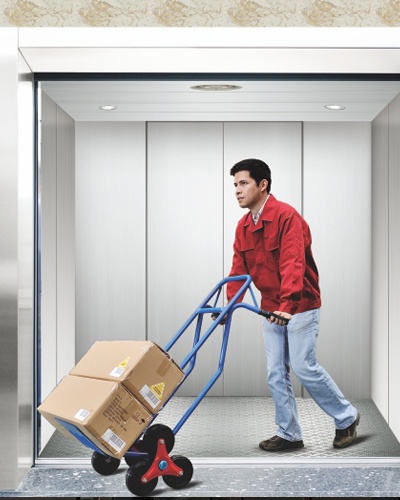China Glass Lifts Manufacturers,Food Elevators Suppliers +86-572-3305657
China Glass Lifts Manufacturers,Food Elevators Suppliers +86-572-3305657
Choosing a Freight Elevator Freight elevators are large […]
Choosing a Freight Elevator
Freight elevators are large and sturdy structures that are built for the purpose of hauling freight. They can be manually or automatically opened and closed. This type of vehicle is commonly used in warehouses and other commercial facilities where space is limited. Some of the features of freight elevators include a heavily reinforced gate, a sturdy steel floor, and a reinforced door that can be either vertical or horizontal. The interior cabin is often non-skid and made of heavy gauge steel.
When choosing a freight elevator, the operator should consider the building's size, the amount of freight the elevator can handle, and the capacity of the equipment. The elevator's load capacity is dependent on its classification, which defines how the loading and unloading processes can be carried out. A freight elevator can accommodate a variety of types of freight, including vehicles, boxes, furniture, and other materials. There are three main types of freight elevators: traction, fixed, and free-standing.
Traction freight elevators are specially constructed to accommodate heavier loads. They use dual rope systems to create a lift that can hold trucks up to 100,000 pounds. These units can also be operated by a forklift. However, the combined weight of the truck and the freight cannot exceed the elevator's capacity.
Fixed freight elevators are used in warehouses, manufacturing facilities, and parking garages. These units are usually used to transport cars into storage areas and onto the manufacturer's floor. Most of these units are hydraulic driven and have a weight capacity of up to 2 tons. While they can be easily used, these units can be quite costly.
Free-standing freight elevators are designed to be less labor-intensive than their traditional counterparts. Since these units do not depend on a building's structure, they are usually more modular. They can be installed directly from the ground, but some do require that the elevator's doors be manually lowered before use.
Unlike passenger elevators, freight elevators have no elevator music. In addition, there are no mirrors or gold inlays. Compared to passenger elevators, freight elevators are much larger.
A freight elevator must be equipped with an emergency stop switch in the car's operating panel. Also, the vehicle must be properly equipped with an access card or key. It should be able to load and unload without crashing or overturning.
Freight elevators are often custom-designed to suit the needs of a specific facility. However, a good freight elevator can accommodate any type of freight. You may need to be an experienced elevator operator to operate a freight elevator. If you have a degree in mechanical engineering or another engineering field, you may be able to work as an elevator operator. Although it is not required, it can help.
There are two classes of freight elevators: Class C1 and Class C2. Both are suitable for the loading and unloading of vehicles. However, Class C2 is better for carrying cars, light loads, and automobiles. Classes C1 and C2 have a maximum loading capacity of 150 percent of their rated capacity.

Machine Roomless Freight Elevator
Product Type: Machine roomless freight elevator
Target Markets: Building construction, museums, logistics centers, warehouses
Control System: VVVF
Traction Machine: Permanent magnet synchronous gearless
Door Machine: VVVF inverter door machine
Rated Load (kg): 1000-3000
Rated speed (m/s): 0.5/1.0
Door Open: Double break open the door / Double-sided open the door
Please leave your Email or phone nomber, so we can contact you as soon as possible.